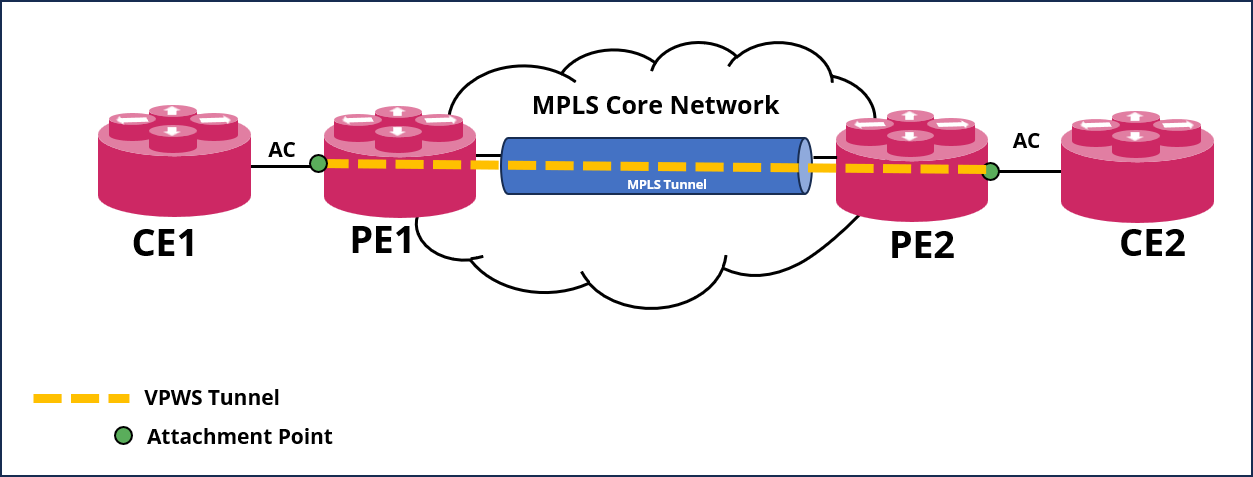EVPN-VPWS Overview
Ethernet Virtual Private Network (EVPN) is a Layer 2 internetworking technology similar to BGP/MPLS IP VPN. EVPN uses extended BGP reachability information and advertisements between different Layer 2 networks at various sites in the control plane.
The EVPN Virtual Private Wire Service (VPWS) is a point-to-point (P2P) service that is built on the EVPN service architecture. EVPN-VPWS uses MPLS tunnels to traverse the backbone network. It offers a Layer 2 packet forwarding mode that connects access circuits (ACs) as per the specifications of RFC 8214.
Supported Standards
| RFC Number | Description |
|---|---|
7432 |
BGP MPLS-Based Ethernet VPN |
8214 |
Virtual Private Wire Service Support in Ethernet VPN |
EVPN VPWS Network Model
As shown in the figure below, an EVPN VPWS network contains the following building blocks:
-
Customer edge (CE)—Customer device directly connected to the service provider network.
-
Provider edge (PE)—Service provider device connected to CEs. PEs provide access to the EVPN VPWS network and forward traffic between customer network sites by using public tunnels.
-
Attachment circuit (AC)—A physical or virtual link between a CE and a PE.
-
Pseudowire (PW)—A virtual bidirectional connection between two PEs. A PW comprises a pair of virtual links in opposite directions.
-
MPLS transport tunnel—A connection that carries one or more PWs across the MPLS core or IP backbone, such as an MPLS tunnel.
-
Cross-connect—A connection formed by two physical or virtual circuits, such as ACs and PWs, that switches packets between them.
The figure below shows the protocol packet exchange process in the EVPN VPWS.

PE1 and PE2 are each configured with an EVPN VPWS instance. After the PE receives packets from the AC, it adds the PW label and sends them to the peer PE through the MPLS transport tunnel. After the other PE (PE2) receives the packet via the MPLS transport path, it removes the PW label of the packets and forwards the packets to the AC bound to the PW.